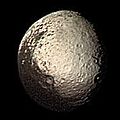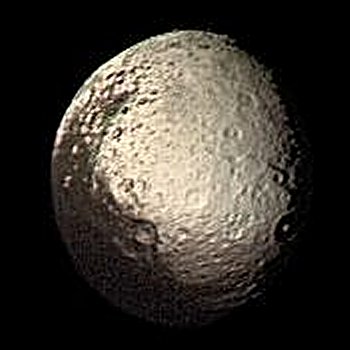Αρχείο:Iapetus by Voyager 2 - enhanced.jpg
Iapetus_by_Voyager_2_-_enhanced.jpg (350 × 350 εικονοστοιχεία, μέγεθος αρχείου: 19 KB, τύπος MIME: image/jpeg)
Ιστορικό αρχείου
Κλικάρετε σε μια ημερομηνία/ώρα για να δείτε το αρχείο όπως εμφανιζόταν εκείνη τη στιγμή.
| Ώρα/Ημερομ. | Μικρογραφία | Διαστάσεις | Χρήστης | Σχόλια | |
|---|---|---|---|---|---|
| τελευταία | 17:29, 4 Απριλίου 2005 |  | 350 × 350 (19 KB) | Smartech~commonswiki | *'''Iapetus by Voyager 2 spacecraft, August 22, 1981''' *same as Iapetus_by_Voyager_2.jpg but focused on the mooon and feature-enhanced. *original image caption: Saturn's outermost large moon, Iapetus, has a bright, heavily cratered icy terrain and a da |
Συνδέσεις αρχείου
Τα παρακάτω λήμματα συνδέουν σε αυτό το αρχείο:
Καθολική χρήση αρχείου
Τα ακόλουθα άλλα wiki χρησιμοποιούν αυτό το αρχείο:
- Χρήση σε ar.wikipedia.org
- Χρήση σε be-tarask.wikipedia.org
- Χρήση σε be.wikipedia.org
- Χρήση σε ca.wikipedia.org
- Χρήση σε de.wikipedia.org
- Χρήση σε en.wikipedia.org
- Χρήση σε eo.wikipedia.org
- Χρήση σε es.wikipedia.org
- Χρήση σε eu.wikipedia.org
- Χρήση σε fr.wikipedia.org
- Χρήση σε gl.wikipedia.org
- Χρήση σε hr.wikipedia.org
- Χρήση σε it.wikipedia.org
- Χρήση σε ja.wikipedia.org
- Χρήση σε ko.wikipedia.org
- Χρήση σε la.wikipedia.org
- Χρήση σε lb.wikipedia.org
- Χρήση σε lt.wikipedia.org
- Χρήση σε lv.wikipedia.org
- Χρήση σε ms.wikipedia.org
- Χρήση σε mwl.wikipedia.org
- Χρήση σε no.wikipedia.org
- Χρήση σε pl.wikipedia.org
Δείτε περισσότερη καθολική χρήση αυτού του αρχείου.




